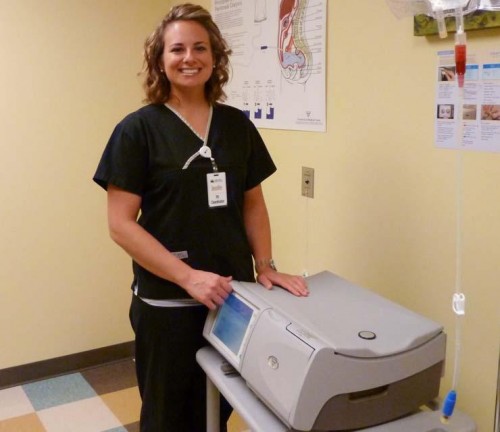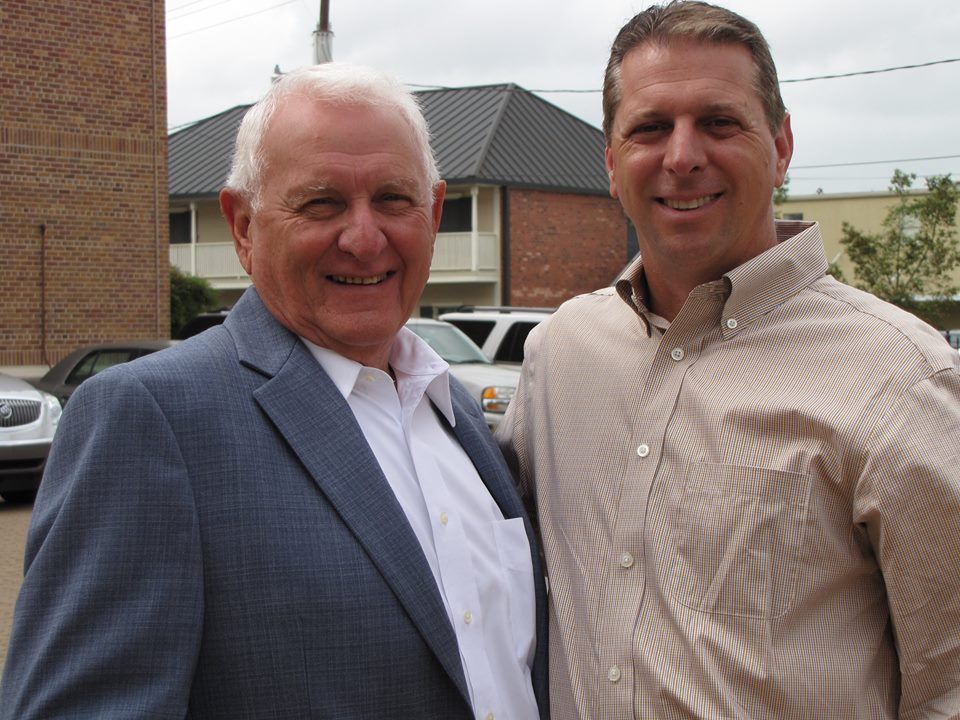Hwy 308 reopened to traffic
June 28, 2011John Alford Ashley
June 30, 2011“I’m going to tell you the truth. There is a stigma about dialysis and many people think that it’s like getting ready for a terrible ending or something like that. But it’s not,” said a client of Reliant Renal Care (RRC), a new dialysis unit located in Houma.
The patient, a former nurse who did not wish to be mentioned by name, started her dialysis therapy earlier this month at the Grand Caillou Road facility. She immediately noticed the beneficial effects of the medical treatment.
“If your kidneys are really getting to where they don’t function at a percentage for healthy living, you really don’t feel good,” she explained. “But once you are on dialysis, you have more energy because you feel better. Your blood is being cleaned, so you can’t help but feel better.”
As the patient enjoyed the amenities of the large facility, including a more privatized space, heated reclining chair, wireless Internet and personal television, she seemed relaxed and comfortable.
“I’m really flabbergasted,” she remarked. “This place is so new, so neat, so clean, so efficient, I’m just extremely satisfied with the people and the personnel.
“They are conscientious and they know what they are doing and they make you feel like you’re at home – well, like you’re in timeout at home,” she added with a laugh. “I’m very glad I came here. And Dr. Gupta just can’t be beat.”
Dr. Shaminder Gupta, the Nephrology Section Chief and Associate Program Director of the residency program at Leonard J. Chabert Medical Center, is also the acting medical director for the new RRC clinic.
For many years, a modern dialysis building in the area has been on Dr. Gupta’s mind, but it wasn’t until Reliant Renal Care Inc., a national provider of outpatient kidney dialysis services with 12 locations in the states of Michigan, Texas, Colorado, Alabama and now Louisiana, approached him that the thought came to fruition.
“I’ve always wanted to have a unit here in the city that was more modern and cutting edge,” the nephrologist explained. “I think Houma hasn’t had a new dialysis unit in over 20 years. … We always had the idea of doing it, myself and the team at Chabert. Reliant Renal Care approached us as a potential partner in terms of bringing patients into a new facility, which we’ve had input on how it was built.”
That input included working with the RRC architects and a company called Spruce Eco-Studio of New Orleans to “go green” in as many aspects of the building process as possible, something Dr. Gupta said he required.
“Through their help we purchased many things that are recycled, reclaimed wood, and something called Plyboo, which is another reclaimed material, instead of using traditional,” he said. “The goal is to promote that here and try to eliminate as much waste as we can. And it’s not all about recycling everything you do; it’s just about a mindset. Being a business that frankly spent a little more on some of the materials, as a point to do that was something I insisted on.”
Having say in how the building was to be constructed was only part of the appeal of pairing with the larger company. RRC was not adverse to home-based therapies, which Dr. Gupta is extremely passionate about promoting.
“I’m a big believer in home dialysis; it’s our first option,” said the medical director. “The advantages with RRC is that they are really open minded to us pushing the envelope and doing some therapies that really aren’t done as often in other places. For our patients, who come from so far away, home-based therapy is very advantageous. … For them to have to drive in to do dialysis three times a week would be basically impossible.”
The unit currently offers several different treatment modalities, including traditional in-center dialysis; home peritoneal dialysis, which is done at home by a machine overnight through a tube in the abdomen where solution is pumped in to collect toxins and then removed; and home hemodialysis, which is also done at home while a patient sleeps and involves blood being filtered through a machine.
Plans for nocturnal dialysis, where the patients would receive overnight treatment at the clinic, are also in the works.
Dr. Gupta, who prefers the home dialysis, is proud that the new facility offers these therapy options.
“Some patients will require traditional dialysis always, but our mode here is to make that the last option and to promote home-based therapies first,” he touted. “Most patients think about dialysis as coming, sitting for four hours, and leaving, which is how it is done in most places, but we are trying to flip that around. So this is cutting edge not only for Louisiana, this is cutting edge nationally.”
The facility, which was “built as an anchor for this side of town,” according to Dr. Gupta, is in proximity to major intersections, Chabert and Terrebonne General Medical Center. With only two other dialysis units operating in the area, the new clinic received its accreditation in record time.
“Accreditation was granted fairly quickly. We are in a health professional shortage area, an under-served area in terms of dialysis care, so we were able to get our approval through. The governing bodies were very supportive in getting us through quickly because they knew the patients needed another option,” Dr. Gupta remarked. “The Houma-Bayou area actually has more dialysis patients probably than any other part of the state, even more than New Orleans, for the percentage of population we have here.”
The reason why the bayou region has such a high percentage of dialysis patients is because of the risk factors, hypertension, diabetes, obesity and smoking, that plague our area, explained the nephrologist. No matter how severe your kidney is damaged, he insists that trying to eliminate these risk factors is always a good idea.
“It’s never too late to try to manage them. No matter what stage someone’s in, you can always minimize progression by controlling those four things,” he explained.
Staffed with a full-time social worker, dietician, receptionist, patient-care technicians, resident nurses, a clinical director and a home program director, the facility currently sees 29 patients who receive traditional dialysis and 18 who receive home-based peritoneal dialysis. This is a temporary stop for these patients, however, as they are all on a waiting list to receive a transplant.
“Once your kidneys have shut down to where you need dialysis, unfortunately short of a transplant, you are going to be on dialysis,” explained Dr. Gupta. “Our ultimate goal for dialysis is not a lifestyle. It is a transition tool to transplantation. Our job is to keep the patients healthy and going so when their number gets called, they can get their kidney and be off of dialysis.”
Jennifer Rodrigue, RRC’s home nurse, trains patients in the clinic so that they can administer their own treatments from the comforts of home. Houma’s RRC promotes home-based therapies. ALYSON SHOWALTER







